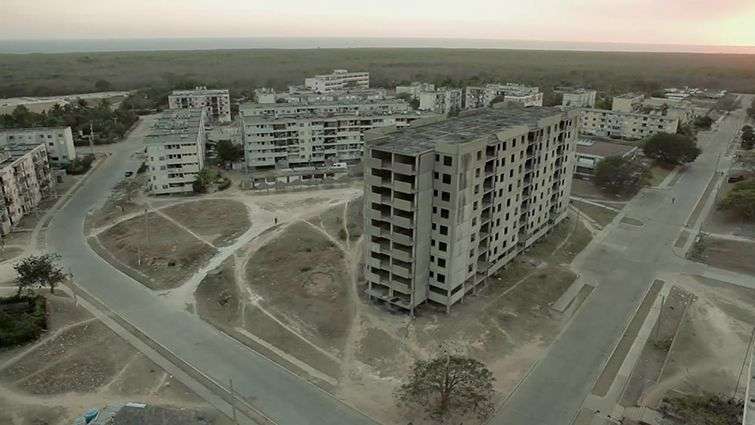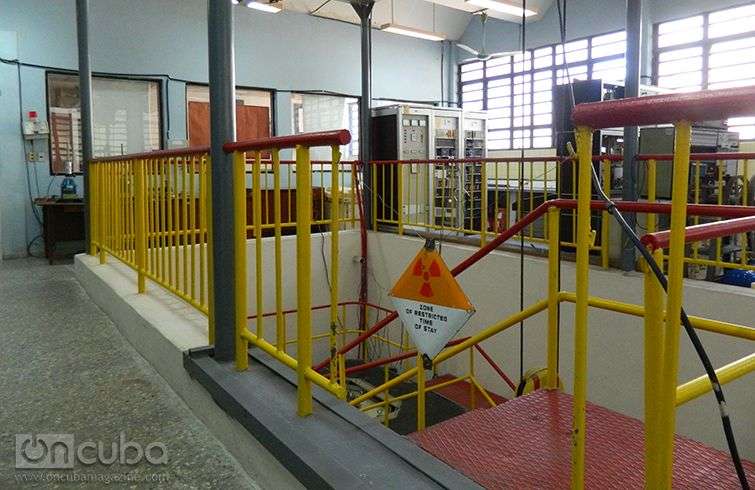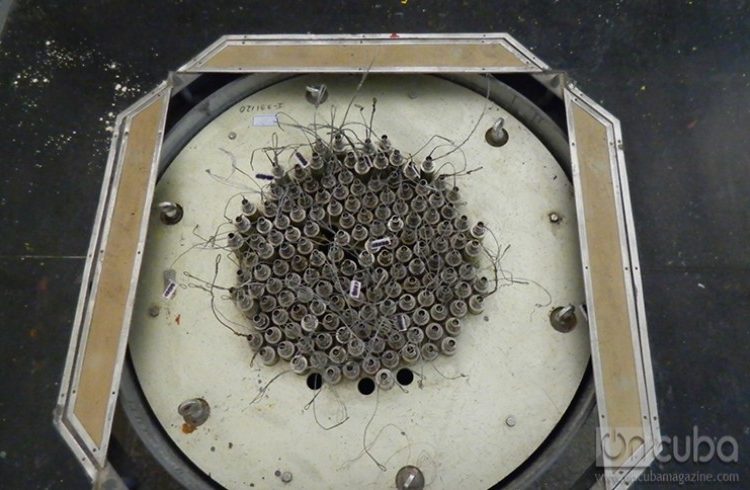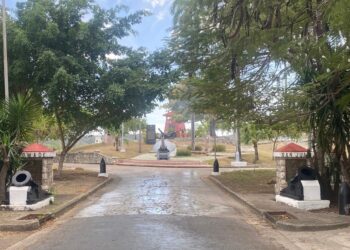The Nuclear Central that was not
Perhaps the most legendary memory Cubans have on uses of nuclear energy was one that did not materialize. In 1976, Cuba and the Soviet Union signed an agreement to build two VVER-400 V316 nuclear reactors, which could have changed a considerable percentage of the energy source consumed in the country, mostly oil.
The construction of the Juraguá nuclear power aroused some controversy off the island, particularly in the United States. The potential in Cuba for safe keeping two nuclear reactors without repeating the Chernobyl disaster was the subject of discussion as the idea matured that much of the Cuban energy consumption could come out from Cienfuegos.

However, the project did not stop because of skepticism. It was due to a decisive reason: the collapse of the European socialist bloc that broke the economic livelihood of the Central. They were half-built facilities, and a newly founded City with people who were going to work on them. Without the USSR, Cuba had no support to fund a project of this magnitude. In 1992 construction was halted and almost a decade later, Fidel Castro announced for last time the government of the country was not interested in finishing the second reactor.
“It was, above all, an economic decision. And, in the end, I think it could have been a political decision, “Aniuska Betancourt Hernandez, president of the Nuclear Energy Agency and Applied Technologies (AENTA) under the Ministry of Science, Technology and Environment, said.
“The country did not have sufficient resources to develop an application of this magnitude. So far, the implemented policy of not undertaking any nuclear energy program remains. On the contrary, it is betting on renewable energy. ”
How far could have had the Cuban nuclear energy project go, hadn’t the Soviet Union disappeared?
“The initial program was that Cienfuegos had two reactors. Also, there was another site studied in Gibara, Holguin, and a third location in Pinar del Río in the West of the country “.
What happened to the investments already made in Juraguá? Is the facility is completely squandered?
Regarding this issue, there is now a very interesting project. In Cuba, hazardous waste – mostly non-nuclear, but radioactive- do not have a suitable place of storage. These wastes are residual chemicals from the pharmaceutical industry, expired, etc.
The country identified this problem a few years ago and started looking for a place to confine and classified these wastes safely. Interestingly, it was decided to use for this purpose the building of what would have been the nuclear plant, and create in it a confinement unit. This is an ongoing project implemented by the Ministry of Industries.

What happens in Cuba to control hazards of nuclear energy?
“One of the strengths of the Cuban nuclear program was that, from a beginning, legislation was adopted” for the Regulation of Peaceful Use of Nuclear Energy “, 1982. This decree, legal instrument governing nuclear applications in Cuba provides that any project requires authorization from the moment that matter the source or technology. In 2000 this body of law was updated to Decree Law 207, on the safe use of nuclear energy.
“All stages of the life of a nuclear application in Cuba carry an authorization: import, location, facility construction, finish, etc. In addition, applications are inspected with a frequency of potential hazards of the used source. In other words, the riskier projects are inspected annually or even twice a year, and less risky have a periodicity of 2-4 years.
“The Penal Code may impose sanctions whenever improper uses are made or safety regulations are violated with respect to the use of nuclear energy.”
There is currently an inactive nuclear reactor, located at the Higher Institute of Technologies and Applied Sciences (INSTEC) and is used only for educational purposes, but every year is supervised by various national and international organizations.

Moreover, Aniuska Betancourt explains the functions of the organism within the AENTA responsible for ensuring the security of applications. The Center for Protection and Hygiene Radiation has basic services protection of the country on the subject. Owns the place where all the radioactive waste generated applications of nuclear techniques in the country are stored. These radioactive wastes are low and medium radioactivity. In the space for that, these radioactive sources are stored with all conditions and skilled personnel needed to avoid human risks and protect the environment.
In addition, this center offers dose calibration service that allows all radiation measuring instruments provide an accurate measurement. On the other hand, provides individual dosemetric services, which measure the dose of all the people who work exposed to radiation, because there is an annual limit not exceed recommended. The dose of each of the workers are recorded monthly, and that is conserved throughout the working life of workers and up to 30 years after the individual stops exposure, as stipulated in the regulations in force in the country.
In the field of nuclear medicine dose calibrators are implemented for each patient receiving treatment. These technologies, conducted by the Center for Isotopes, are very important to prevent a patient from receiving the wrong dosage from his illness, which can result in serious health consequences.
Has Cuba ever had a major accident?
“No. Operational problems can always arise, but we have not had any major accidents. One of the things that are required to entities that possess radioactive sources is to have an emergency plan, called Plan for Disaster Reduction. In fact, you have to anticipate and respond to all situations, both technological origin and natural origin. In fact, our Ministry works in conjunction with the Civil Defense agency responsible for disaster prevention “.
Cuban nuclear context today
In 2014, Cuba signed the programmatic framework with the IAEA with its priorities: health, food security and the environment. These priorities will target projects in the country with the international body until 2020.
In the interest aroused at international level, food safety should be one of the new directions to be taken by Cuba in the field of nuclear energy. A project with the IAEA enabled the Centre of Studies and Technological Applications of Nuclear Energy owning a computer to detect heavy metals in foods. This device today has the ability to meet domestic demand, and it would be necessary to import more infrastructures to enable mass risk study of food.
Another application of nuclear energy does not already own conditions to benefit a majority sector of the country are the analysis of environmental pollution. Studies to determine the cleanliness of water resources are made using nuclear techniques currently very restricted to specific laboratories. The Havana Bay has been one of those investigations, which required to be extended to many other Cubans environments.
What collaborative projects does Cuba maintain with other countries on issues of nuclear energy?
“Of course, there are projects bilaterally. But collaborations we have more participation are regionally. There is a Regional Cooperation Agreement for the Promotion of Nuclear Techniques in Latin America and the Caribbean, where Cuba participates actively.
“This group signs regional projects in all areas of nuclear technology applications: agriculture, industry, environmental protection, health, radioisotope production, and to a lesser extent, nuclear energy.
“Bilateral projects include the existing with Vietnam to reuse the irradiation plant. This link is that in that country they rescued a similar plant that we have. The project was presented and accepted within the framework of the Joint Commission Cuba-Vietnam. This year, the Vietnamese are involved in technological assembly and the next year the assembling of the source will materialize”.
One of the big questions concerning growth of the Cuban nuclear energy is the relationship with the United States. From 1959 to date, researchers and Cuban leaders have been unable to participate in events of the IAEA when these are done on American soil. From the turn of gradually implemented in relations between the two countries, how will again be possible such exchanges? Will America begin to support the development of nuclear power in Cuba, given the alleged “danger in your backyard”? In the near future, these topics will be included, ultimately, in the negotiating table?










